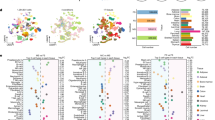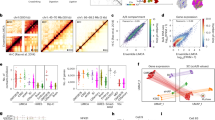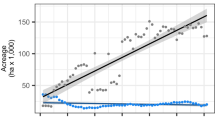Abstract
The maintenance of sexual reproduction is a problem in evolutionary theory because, all else being equal, asexual populations have a twofold fitness advantage over their sexual counterparts1,2 and should rapidly outnumber a sexual population because every individual has the potential to reproduce. The twofold cost of sex exists because of anisogamy or gamete dimorphism2—egg-producing females make a larger contribution to the zygote compared with the small contribution made by the sperm of males, but both males and females contribute 50% of the genes. Anisogamy also generates the conditions for sexual selection3, a powerful evolutionary force that does not exist in asexual populations. The continued prevalence of sexual reproduction indicates that the ‘all else being equal’ assumption is incorrect. Here I show that sexual selection can mitigate or even eliminate the cost of sex. If sexual selection causes deleterious mutations to be more deleterious in males than females, then deleterious mutations are maintained at lower equilibrium frequency in sexual populations relative to asexual populations. The fitness of sexual females is higher than asexuals because there is no difference in the fecundity of sexual females and asexuals of the same genotype, but the equilibrium frequency of deleterious mutations is lower in sexual populations. The results are not altered by synergistic epistasis in males.
This is a preview of subscription content, access via your institution
Access options
Subscribe to this journal
Receive 51 print issues and online access
$199.00 per year
only $3.90 per issue
Buy this article
- Purchase on Springer Link
- Instant access to full article PDF
Prices may be subject to local taxes which are calculated during checkout


Similar content being viewed by others
References
Maynard-Smith, J. The Evolution of Sex (Cambridge Univ. Press, Cambridge, 1978).
Bell, G. The Masterpiece of Nature: The Evolution and Genetics of Sexuality (Univ. of California Press, Berkeley, 1982).
Andersson, M. Sexual Selection (Princeton Univ. Press, Princeton, 1994).
Trivers, R. L. in Sexual Selection and the Descent of Man (ed. Campbell, B. G.) 141 (Aldine, Chicago, 1972).
Arnold, S. J. & Wade, M. J. On the measurement of natural and sexual selection: applications. Evolution 38, 720–734 (1984).
Manning, J. T. Males and the advantage of sex. J. Theor. Biol. 108, 215–220 (1984).
Kodric-Brown, A. & Brown, J. H. Anisogamy, sexual selection, and the evolution and maintenance of sex. Evol. Ecol. 1, 95–105 (1987).
Koselag, J. H. & Koeslag, P. D. Evolutionary stable meiotic sex. J. Hered. 84, 396–399 (1993).
Kimura, M. & Maruyama, T. The mutational load with epistatic interactions in fitness. Genetics 54, 1337–1351 (1966).
Kondrashov, A. S. Selection against harmful mutations in large sexual and asexual populations. Genet. Res. 40, 325–332 (1982).
Kondrashov, A. S. Deleterious mutations and the evolution of sexual reproduction. Nature 336, 435–440 (1988).
Charlesworth, B. Mutation-selection balance and the evolutionary advantage of sex and recombination. Genet. Res. 55, 199–221 (1990).
Chasnov, J. R. Mutation-selection balance, dominance and the maintenance of sex. Genetics 156, 1419–1425 (2000).
Crow, J. F. in Mathematical Topics in Population Genetics (ed. Kojima, K.-I.) 128–177 (Springer, Berlin, 1970).
Elena, S. E. & Lenski, R. E. Test of synergistic interactions among deleterious mutations in bacteria. Nature 390, 395–398 (1997).
Lynch, M. & Walsh, B. Genetics and Analysis of Quantitative Traits (Sinauer Associates, Sunderland, 1998).
García-Dorado, A. & Caballero, A. On the average coefficient of dominance of deleterious spontaneous mutations. Genetics 155, 1991–2001 (2000).
Peck, J. R. & Waxman, D. Mutation and sex in a competitive world. Nature 406, 399–404 (2000).
Keightley, P. D. & Eyre-Walker, A. Terumi Mukai and the riddle of deleterious mutation rates. Genetics 153, 515–523 (1999).
Lynch, M. et al. Spontaneous deleterious mutation. Evolution 53, 645–663 (1999).
Keightley, P. D. & Eyre-Walker, A. Deleterious mutations and the evolution of sex. Science 290, 331–333 (2000).
Kingsolver, J. G. et al. The strength of phenotypic selection in natural populations. Am. Nat. 157, 245–261 (2001).
Drickamer, L. C., Gowaty, P. A. & Holmes, C. M. Free female choice in house mice affects reproductive success and offspring viability and performance. Anim. Behav. 59, 371–378 (2000).
Welch, A. M., Semlitsch, R. D. & Gerhardt, H. C. Call duration as an indicator of genetic quality in male gray tree frogs. Science 280, 1928–1930 (1998).
Evans, J. P. & Magurran, A. E. Multiple benefits of multiple mating in guppies. Proc. Natl Acad. Sci. USA 97, 10074–10076 (2000).
Mulcahy, D. L. The rise of angiosperms: a genecological factor. Science 206, 20–23 (1979).
Whitlock, M. C. & Bourget, D. Factors affecting the genetic load in Drosophila: synergistic epistasis and correlations among fitness components. Evolution 54, 1654–1660 (2000).
Hurst, L. D. & Peck, J. R. Recent advances in understanding of the evolution and maintenance of sex. Trends Ecol. Evol. 11, 46–52 (1996).
Whitlock, M. C. Fixation of new alleles and the extinction of small populations: drift load, beneficial alleles, and sexual selection. Evolution 54, 1855–1861 (2000).
Howard, R. S. & Lively, C. M. Parasitism, mutation accumulation and the maintenance of sex. Nature 367, 554–557 (1994).
Acknowledgements
I thank C. Lively, K. Quinlan and M. Wade for comments. A. Kondrashov suggested using the multilocus approach to this problem. S. Otto pointed out that the analytical solution is exact by use of equation (6). This work was supported by NSERC Canada.
Author information
Authors and Affiliations
Corresponding author
Rights and permissions
About this article
Cite this article
Agrawal, A. Sexual selection and the maintenance of sexual reproduction. Nature 411, 692–695 (2001). https://doi.org/10.1038/35079590
Received:
Accepted:
Published:
Issue Date:
DOI: https://doi.org/10.1038/35079590
This article is cited by
-
Genomic evidence that a sexually selected trait captures genome-wide variation and facilitates the purging of genetic load
Nature Ecology & Evolution (2022)
-
Sexual selection for males with beneficial mutations
Scientific Reports (2022)
-
The origination events of gametic sexual reproduction and anisogamy
Journal of Ethology (2022)
-
Multivariate selection and the making and breaking of mutational pleiotropy
Evolutionary Ecology (2022)
-
Experimental evidence for effects of sexual selection on condition-dependent mutation rates
Nature Ecology & Evolution (2020)
Comments
By submitting a comment you agree to abide by our Terms and Community Guidelines. If you find something abusive or that does not comply with our terms or guidelines please flag it as inappropriate.



